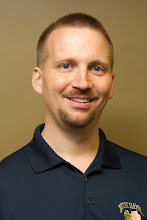On Monday, I had a chance to visit Vince Freeh and a few folks at NC State in the Electrical/Computer Engineering and Computer Science departments. Their new building is simply amazing I must say. I gave a seminar on our ScaleBox work which had a wonderful attendance despite competing against a speaker on video games who had given a talk earlier that day. Fortunately, it is early in the semester but I was quite impressed by the sheer number of students we packed into the seminar room. The slides should be posted shortly to the NetScale wiki sometime tomorrow (Tuesday).
Tuesday through Thursday was the IEEE BroadNets conference, a nice smaller conference that had evolved out of the former Opticomm with three tracks on general Internet networking, wireless networking, and optical networking. I mixed quite a bit between the Internet symposium and the wireless networking symposium and unfortunately missed a few good talks here and there. There was a paper on Layer 3 Rogue Wireless Access Point detection that I missed and did not have a chance to catch the authors to get a bit more information.
Some of the highlights I thought were:
- TCP acceleration for low-bandwidth links: The paper that received the best paper award for the Internet symposium focused on neat tricks for improving the perceived performance for bandwidth-limited mobile devices. Neat tricks that are certainly timely in today's current Internet.
- eMIST testbed: The testbed was a collection of Java test tools for profiling of Internet connectivity on cell phones out of Kevin Almeroth's group at UCSB. Very neat suite of tools that showed some of the pitfalls when trying to design real-time / delay-sensitive applications (primarily games) for mobile devices.
- TCP Quick Start: A paper by Scharf analyzed the performance of the Experimental TCP Quick Start RFC. Interesting in that Quick Start seems to share some of the properties of the work in the recent DARPA Control Plane effort led by Tim Gibson as the DARPA PM. While the paper focused exclusively on performance, the core protocol is especially interesting in light of our accelerated admission control schemes. In short, Quick Start probes for capacity via IP Options and then ramps up CWND without probing. Of course, the use of IP Options are a non-starter for any real deployment but a gateway or hybrid setup could have quite a bit of promise.
- PoMo: Interesting work by Griffeon, Calvert of University of Kentucky and Bhatterjee (sp?) of Maryland. The work is sponsored by FIND and makes a good faith effort at separating routing from addressing. Plenty of work to be done as the work is still in its infancy but something to keep an eye on.
- Ethernet vs. IP in the MAN/WAN: Thanks to my adviser, Arun Somani (the chair at ISU - my alma mater), and Gigi Karmous-Edwards I got roped into serving on a panel discussing the previous topic of a panel consisting of Adel Saleh (DARPA PM), K. K. Ramikrishan (AT&T), and David Allen (Nortel). I learned quite a bit but unfortunately had to follow David Allen who certainly is at the forefront of pushing out Ethernet farther. I highly encourage people to track down both David Allen's slides and K. K. Ramakrishnan's slides as they had interesting perspectives from the ISP and vendor sides. The RFCs governing MACinMAC and PBB-TE are on my list for late night reading when I have a chance. Also neat is that IS-IS is the preferred link state of choice due to its independence of addressing. Research-wise, Adel Saleh's slides are perhaps the most thought provoking as they look at what different permutations might emerge and ask more questions than providing answers. Needless to say I was but a humble assistant professor in the group but I certainly thank Dr. Karmous-Edwards for the wonderful opportunity to be up with the group. You can catch my slides on my musings on what the last-mile is bringing on the NetScale wiki.

No comments:
Post a Comment